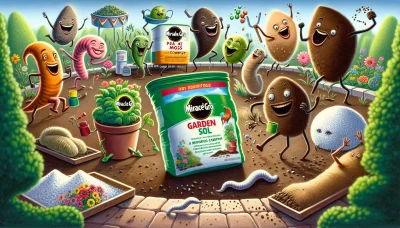How do you eat persimmons Quiz
Test Your Knowledge
Question of
How Do You Eat Persimmons?
Persimmons are a unique and flavorful fruit that have gained popularity not only on the dining table but also in gardens around the world. This fruit, with its sweet, honey-like flavor, can be enjoyed in various ways, making it a versatile addition to both culinary and gardening enthusiasts' repertoires. Whether you're curious about incorporating persimmons into your diet or interested in growing them, understanding the best methods to eat and enjoy this fruit can enhance your appreciation for its distinct taste and nutritional benefits.
Types of Persimmons
Persimmons are a popular fruit found in many gardens, known for their sweet, honey-like flavor. Among the various types, Fuyu and Hachiya persimmons are the most commonly cultivated. Fuyu persimmons are distinguishable by their squat, round shape and are known for their crisp texture, similar to that of an apple. They can be eaten raw and are often enjoyed without the need to be fully ripe. On the other hand, Hachiya persimmons are larger and have an acorn-like shape. They are highly astringent when unripe and must be fully soft before consumption. Once ripe, Hachiya persimmons possess a rich, jelly-like texture, making them ideal for baking and cooking. Both types offer unique flavors and textures, making them versatile fruits for various culinary uses.
Preparing Persimmons for Eating
- Start by selecting ripe persimmons that are soft to the touch. Unripe persimmons can be very astringent.
- Wash the persimmons thoroughly under running water to remove any dirt or residue from the surface.
- Depending on the type of persimmon and personal preference, you may choose to peel the skin. Fuyu persimmons can be eaten with the skin, while Hachiya persimmons are usually peeled.
- For Fuyu persimmons (the squat, tomato-like variety), slice off the leafy top with a knife.
- Cut the Fuyu persimmons into slices, wedges, or dice them based on your preference or recipe requirements.
- For Hachiya persimmons (the elongated, acorn-like variety), once fully ripe and soft, cut off the top and scoop out the jelly-like interior with a spoon. This can be eaten as is or used in recipes.
- If you prefer, you can also blend persimmons into smoothies or use them as a topping for yogurt and cereal.
When Are Persimmons Ready to Eat?
Persimmons signal their readiness to be enjoyed through a combination of color, texture, and softness. As they ripen, their skin transforms from a light yellow-orange to a deep, rich red-orange, indicating they are nearing peak sweetness. The texture of the fruit also changes; what begins as firm gradually becomes soft to the touch. For the astringent varieties, such as Hachiya, this softness is crucial - they are best eaten when they feel almost jelly-like, as eating them too early can lead to an unpleasantly bitter experience. Non-astringent types, like Fuyu, can be enjoyed while still slightly firm, but they too will become sweeter and more flavorful as they soften. Gently pressing the fruit with your fingers should give a slight yield if it's ready to eat, offering a reliable method to gauge its ripeness.
Creative Ways to Enjoy Persimmons
- Adding sliced persimmons to a vibrant winter salad for a sweet and crunchy texture
- Incorporating pureed persimmons into desserts like puddings, pies, and cakes for a unique flavor
- Blending persimmons into smoothies or shakes, combined with other fruits for a nutritious drink
- Enjoying ripe persimmons as a standalone snack, either sliced or eaten whole for a quick and healthy option
Growing Persimmons in Your Garden
Persimmons are a delightful addition to any garden, offering not only delicious fruit but also a beautiful landscape presence. These trees thrive in warmer climates, generally in USDA zones 7 through 10, where temperatures rarely drop below 20°F (-6°C). They prefer well-drained, slightly acidic soil but are adaptable to many soil types as long as waterlogging is avoided. When planting persimmons, choose a sunny spot and give each tree about 20 feet of space to grow. Regular watering is crucial during the first few years to establish the root system, but once mature, persimmon trees are relatively drought-tolerant. Pruning should be done sparingly, mainly to remove any dead or overcrowded branches, ensuring your tree remains healthy and productive. With the right care, persimmons can be a rewarding addition to your garden, providing beautiful foliage and tasty fruit for many years.
Health Benefits of Persimmons
| Nutrient | Health Benefits |
|---|---|
| Vitamin A | Supports immune function, vision, and skin health. |
| Vitamin C | Antioxidant that aids in tissue repair, immune system function, and iron absorption. |
| Manganese | Plays a role in bone development and the metabolism of amino acids, cholesterol, and carbohydrates. |
| Fiber | Helps regulate bowel movements, blood sugar levels, and cholesterol. Aids in achieving a healthy weight. |
| Antioxidants | Protects cells from damage caused by free radicals. May reduce the risk of chronic diseases. |












